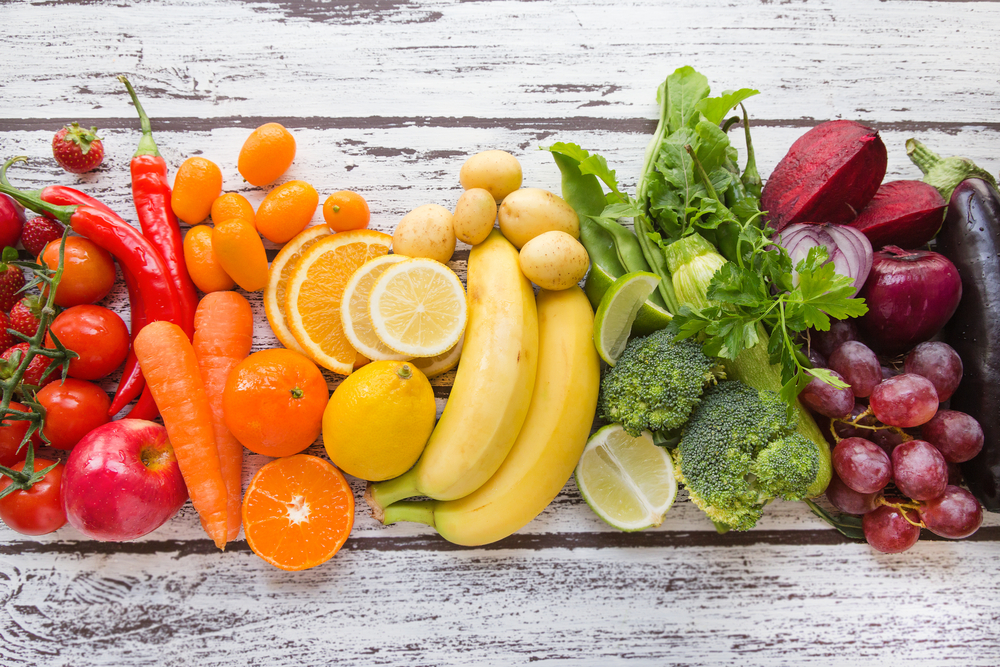
There’s a reason why the phrase “you eat with your eyes” exists. Does anything look more delicious than a beautiful plate full of fruits or vegetables in every color of the rainbow? When we see a plate loaded with vibrant reds, oranges, yellows, purples, and greens, our mouths automatically begin to salivate because our bodies are craving color variation.
What is it about all that color that makes food healthy, or more importantly, why is it that eating a full rainbow of foods is important for our physical health? The answer lies in something called phytochemicals.
Naturally occurring in fruits and vegetables, phytochemicals--also known as phytonutrients--work hand in hand with the fruit and vegetable’s natural vitamins, fiber, and minerals to create a whole, healthy food. Phytochemicals are not one kind of plant compound, but a vast array of them, each unique to specific color ranges of foods.
Though the term phytochemicals may not already be in your vocabulary, chances are you’re familiar with at least a few of them by name. Beta-carotene, lutein, and lycopene are all phytochemicals that we read about and see proudly displayed on food labels, baby formulas, and in multivitamin ingredient lists.
So, what is the connection to phytochemicals and the colors of fruits and vegetables? As it happens, the color of the fruits and vegetables we eat are directly linked to the types of phytochemicals contained within the food.
Eating a healthy array of colors—literally, a rainbow of colors—is exactly what your body needs to maintain a healthy, balanced ratio of all the beneficial phytochemicals available, each of which is designed to benefit your body in a different way.
Reds
Lycopene and anthocyanins give plants their red color, and keep us full of carotenoids, which can help reduce your risks of developing certain types of cancers. Anthocyanins are dynamic powerhouse antioxidants, which keep your urinary tract healthy and even lower your blood pressure and cholesterol, making them very heart-healthy indeed.
Red fruits and vegetables are critical sources of lycopene, but there is no fruit finer for lycopene than the humble tomato. Tomatoes are basically little lycopene concentrate bombs, bursting with the good stuff.
Anthocyanins can be found in strawberries, rhubarb, beets, and cranberries.
Keep your heart singing with a daily dose of red fruits and vegetables including red cabbage, pomegranates, red potatoes, blood oranges, apples, cherries, red peppers, watermelon, and radishes.
Blues and Purples
Anthocyanins may give red plants their antioxidants, but they provide purple and blue fruits and vegetables with their color. Anthocyanins are powerful antioxidants, and they are great for helping your body control your blood pressure and heart health naturally. The blue and purple stuff also help to reduce your risk of stroke.
The darker the purple, the higher the concentration of those phytochemicals. The blueberry, unassuming and small though it may be, actually has the highest antioxidant level of all fruits and vegetables. Yes, all of them. Blueberries have also been shown to aid in memory and can help you age very, very well.
The next time you choose what foods you’re having for breakfast, dinner, or dessert, opt for delicious blue and purple foods like blueberries, raisins, purple carrots, purple fingerling potatoes, eggplants, plums, and yummy figs.
Oranges and Yellows
Carotenoids give yellow and orange fruits and veggies their bright, sunny color, and they provide your body with nourishing beta-carotene, alpha-carotene, folate, and Vitamin C. The orange foods also add another vitamin, Vitamin A, promote healthy skin and bone health, decrease your risks of developing cancers, and keep your heart healthy.
And that is not including the two biggest benefits your body gets from yellow and orange foods: improved immune function and eyesight boosters.
When it’s time to fill your plate, be sure to load it up with yellow and orange foods like peaches, butternut squash, yellow summer squash, yellow and orange bell peppers, grapefruits, pineapples, corn, pears, persimmons, and of course, carrots and bananas.
Greens
Your mother, doctor, and nutritionist have all told you to eat your greens, and they were absolutely right. Green fruits and vegetables are full of chlorophyll, and the phytochemicals indoles and isothiocyanates which can help protect your body from some cancers.
Green fruits and vegetables supply your body with carotenoids, omega-3s, potassium, folate, Vitamin B, and Vitamin K, which can lower blood pressure and aid in clot formation. The motherload nutrient in greens is lutein, which works alongside zeaxanthin, keeps your eyes healthy and happy.
Pile these greens on your plate and see your health take a turn for the better: dark leafy greens like kale, swiss chard, collard greens, and turnip greens, broccoli, cucumbers, green apples, green grapes, kiwi, asparagus, avocados, zucchini, brussels sprouts, beans, limes, and green peppers.
Whites
We forget about white foods when we form our rainbows, but they are just as important as the others in providing us with phytonutrients. White veggies and fruits get their color from anthoxanthins, and the chemical compound allicin is the phytonutrient that helps keep our blood pressure under control, prevents heart disease, and can reduce your risk of developing stomach cancer.
White fruits and veggies have another phytochemical, flavonoids, which are impressive at combating free-radicals which we can get from herbicides, pollution, radiation, and other environmental toxins that can harm our bodies both inside and out.
Be sure to add the white food group to your meal planning, including onions, garlic, parsnips, cauliflower, turnips, mushrooms, jicama, turnips, lychees, coconuts, potatoes, garlic, and bananas.

